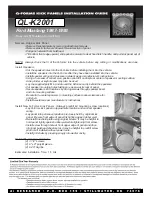
Figure 7. Lift the loudspeaker into the hole
so that the mounting brackets go inside the
wall cavity.
Figure 8. Lower the loudspeaker carefully
until its weight rests on the screws.
Figure 9. Now you can connect the cables.
Painting the loudspeakers
The metal mesh grille can be spray painted
to match the wall colour. Do not paint
the loudspeaker enclosure itself, or try
to paint the grille while it is attached to
the loudspeaker. Remove the thin cloth
attached to the grille to avoid clogging
the grille with paint. Paint the grille with a
thin spray. Do not use brushes or rollers.
Be very careful not to clog the holes on the
mesh with paint.
Installing the AIW26B
loudspeaker enclosure
Use the cardboard wall cut-out template
to find the location for the AIW26B. The
template also shows the position of the
loudspeaker drivers, so you can easily
find the placement that brings them to the
optimum position as outlined in chapter
“Loudspeaker placement”.
Examine the wall structure carefully to
find a clearly unobstructed location for the
loudspeaker. The loudspeaker enclosure
requires a minimum of 88 millimeters (3
1
/
2
in) of free depth behind the sheetrock. Keep
in mind that the mounting brackets of the
AIW26B need a clearance inside the wall
of at least 125 millimeters (5 in) above the
top edge of the hole and 65 mm (2
9
/
16
in)
below the lower edge. Also note that the
grille is slightly wider and taller than the hole
and requires about 20 millimeters (3/4 in) of
smooth wall surface around all sides of the
hole.
When you have found a good location,
check that the template is level and trace
the hole onto the wall with a pencil along
the outline of the template. If you are not
sure that the chosen part of wall is free from
obstructions, you can start by making a
smaller hole at the center of the marked area
through which you can probe the inside of
the wall. Use a drywall saw and make the
first cut at a 45° angle toward the center of
the hole so you can put the cut piece back
in if the location is unsuitable. If you find
no obstructions, you can make the final cut
along the marked lines.
After cutting the hole, protect the wall
surface against scratching by attaching the
template below the lower edge of the hole as
shown in Figure 3.
If you have already connected the RAM1
amplifier units to the system, select the
loudspeaker that has the same ID number
as the amplifier it will be driven by.
Attach the mounting flange to the
loudspeaker with the six Torx screws
provided. Tighten the screws a few turns so
you can lift the loudspeaker by gripping the
flange (Figures 4-6).
Lift the loudspeaker into the hole lower
end first (Figures 7-9). Now you can connect
the loudspeaker cables (Figure 10). Be
careful to ensure correct polarity!
Take the loudspeaker out of the hole and
lift it back in top end (cable binding posts)
first (see Figures 11-12). Push the lower
end of the loudspeaker onto the edge of the
sheetrock. Push both mounting brackets fully
up and hold them there as you push the lower
end of the loudspeaker into the wall (see
Figure 13). When the loudspeaker is in the
correct position, pull the mounting brackets
down. Remove the cardboard template.
Take a hold of the middle screws and
lift the loudspeaker a little (Figure 15)
while simultaneously pushing the flange
against the wall. Lower the loudspeaker
down carefully while keeping pressure on
the flange. Now the weight of the whole
combination should rest on the step on the
inside of the flange (Figure 16).
Start tightening the screws from the
middle pair. Hold the flange and loudspeaker
in place with a firm grip on the opposite
screw (Figure 17). Tighten to 2 Nm (1.5
ft-lbf). Next tighten the top screws and last
the lower screws. Check that the edge of the
flange sits evenly against the wall surface
on all sides. If not, loosen the screws and
Содержание aiw26b
Страница 1: ...Operating Manual AIW26B ...






























